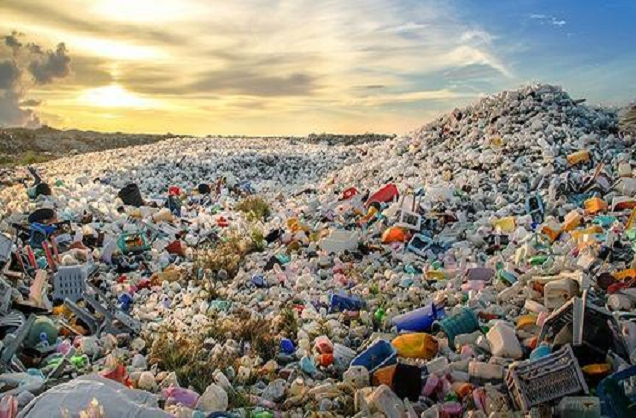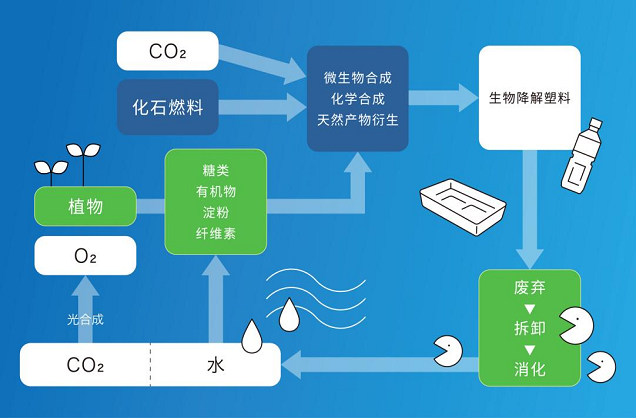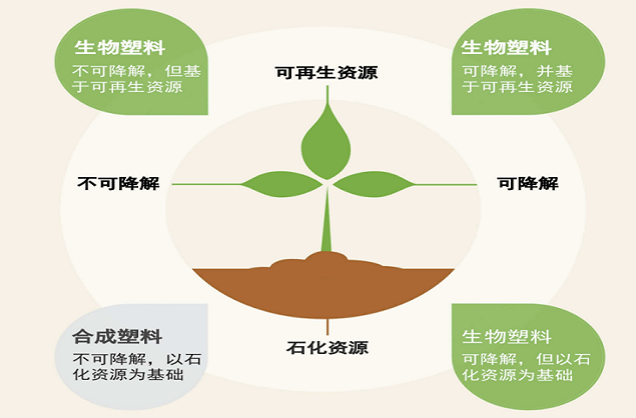Why the “biodegradable” plastic bags you buy may not be environmentally friendly - 3 myths revealed!
According to the latest Global Assessment Report released by the United Nations Environment Programme, the annual global consumption of “degradable” plastic bags is as high as 5 million tons, but 67% of them fail to reach the real degradation standard in the natural environment. More surprisingly, in the Chinese market sampling of “degradable” plastic bags, up to 72.3% of the actual degradation rate of less than 30%. That biological “degradable” plastic can really be environmentally friendly?

What materials are used in biodegradable plastics?
Biodegradable plastics are plastics that can be completely degraded into carbon dioxide, water, inorganic salts and new biomass with the participation of microorganisms in nature. Biodegradable plastics differ from traditional plastics in that bio-based polymers are derived from renewable resources. Such as sugar, starch, organic matter, cellulose and so on. Therefore, this is the reason why people say that biodegradable plastics are more environmentally friendly.

Biodegradable plastics can be categorized into “bio-based biodegradable plastics”, “fossil-based biodegradable plastics” and “starch-based biodegradable materials” depending on the raw material. starch-based biodegradable materials”. What are these biodegradable plastics made of?

Bio-based Biodegradable Plastics”, commonly known as PLA (Polylactic Acid PLA), the raw material is mainly corn starch, but may also be other biomass, PLA PAL is generally used more for disposable straws.
“Fossil-based biodegradable plastics”, commonly known as PBAT (polybutylene adipate/terephthalate), made from petrochemical resources (including coal and oil). If you use biodegradable plastic bags, you can read the product labeling, which usually contains PBAT.
“Starch-based biodegradable materials”, starch-based materials are better biodegradable, usually requires 6-12 months to degrade, some products need specific composting conditions.
Next here, we will reveal the “biodegradable plastic bags” behind the 3 major misconceptions, to help you avoid the “pseudo-environmental” traps!
Myth 1: All products labeled as “biodegradable” are equally environmentally friendly?
You should be clear, not all “biodegradable” plastics can be environmentally friendly, the so-called “biodegradable” plastics on the market are mainly divided into three categories, please learn to identify the difference between their environmental protection:
1, fully biodegradable plastics (such as PLA, PBAT, PHA):
Degradation needs to be in a specific industrial composting environment (58-60 ℃ high temperature, specific humidity and specific micro-organisms) in order to degrade, the complete decomposition time of 3-6 months, the cost is 3-5 times higher than ordinary plastics.
2. Oxidized degradation plastics
This kind of degradation plastic degradation process is only broken into micro-plastics (e.g. 30%PAL+70%PE), and can not be completely decomposed by microorganisms, and the cost is only 10-15% higher than ordinary plastics.
3. Starch-based plastics
Starch-based degradable plastics mainly have starch decomposition residual plastic fragments, the process may cause more serious microplastic pollution, and the cost is 50% higher than ordinary plastics.
Myth 2: Biodegradable = can break down in any environment
Real biodegradation needs to meet strict environmental conditions, some merchants do not necessarily tell you:
1、Temperature requirements: need to be maintained at 50-60℃.
2, humidity requirements: the relative humidity needs to be maintained at 50-70
3, microbial environment: need to participate in the decomposition of specific flora
4、Time requirement: complete decomposition takes 3-6 months.
In an ordinary home environment or landfill, it is almost impossible to meet these conditions at the same time. A survey of a landfill in Beijing showed that even biodegradable plastic bags that meet the standard still remain intact after 5 years.
Myth 3: The more expensive the more environmentally friendly?
We analyze the cost of 12 mainstream brands of “biodegradable” plastic bags on the market:
1, the cost of the real fully degradable materials only accounted for 35-45% of the selling price
2. The cost of “environmental protection certification” accounts for 25-30%.
3, the brand marketing premium of 30-40%
4, more outrageous is that some of the price of 5 yuan / a “green bag”, the actual degradation of less than 30%!
How to distinguish the real “biodegradable” bags?
In the purchase of biodegradable or compostable plastic bags, you first need to check whether the bag below the national regulations of the plastic bag logo, and then, according to the environmental protection logo below the plastic bag production raw materials to determine the commonly used biodegradable or compostable plastic bag raw materials for the PLA, PBAT. distinguish the environmental protection bag is generally divided into four steps:
1. Look at the implementation of standards (preferred GB/T 38082 or ASTM D6400)
2. Check the proportion of ingredients (PLA + PBAT ≥ 90%)
3. Recognize the degradation conditions (industrial compost/home compost logo distinction)
4. Scan the traceability QR code (demonstrates how to check the third-party degradation certification)
The following is a biodegradable plastic bag from abroad, which is composed of copolymer of butylene adipate and butylene terephthalate (PBAT) and polylactic acid (PLA) with 20% starch. It complies with ASTM D6400 (US) and EN13432 (EU) standards for degradability of plastic bags.

 Significant progress in PBAT/s
Significant progress in PBAT/s
 PLA/PBAT composite film degrad
PLA/PBAT composite film degrad
 A New Choice for Takeaway Pack
A New Choice for Takeaway Pack
 Significant progress in PBAT+s
Significant progress in PBAT+s
CONTACT
Add: Room 4006, No.1 Helong Yiheng Road, Baiyun District, Guangzhou City
Tel: +8613450255948
Wechat : +86-13450255948
Fax: +86-13450255948
E-mail: 13450255948@163.com








